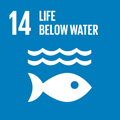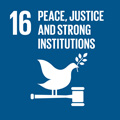- Docente: Pierfrancesco Callieri
- Credits: 12
- SSD: L-OR/16
- Language: Italian
- Teaching Mode: Blended Learning
- Campus: Ravenna
- Corso: First cycle degree programme (L) in Cultural Heritage (cod. 9076)
Learning outcomes
The course aims to introduce the student in the complex field of archaeology of the Iranian world, with particular reference to the territories of the Iranian plateau, through the presentation of the main archaeological evidence illustrated according to a historical-cultural perspective, also aimed at highlighting specific conservation issues. At the end of the course, the student has acquired a knowledge of the main archaeological evidence of the area under examination, is able to place them in the cultural-historical context and to understand the specific conservation issues, is able to learn from experts in other fields and identify relationships with other disciplines, has methodological rigor and accuracy.
Course contents
The 40 hours of frontal lectures are related to the cultural-historical problems of the Iranian world, necessary for a cultural framing of the course subject, including an examination of the sources, as well as a first overall presentation of the archaeology of Iran between the 7th century BC and the 7th century AD. The 20 hours in e-learning mode are devoted to the main archaeological evidence of Iran from this period, which will be presented in a detailed descriptive approach and updated on the basis of the most recent bibliography. The detailed contents are listed in the course index on the webpage.
Readings/Bibliography
For the historical part, whose general knowledge is necessary, we recommend reading J. Wiesehöfer, La Persia Antica, Bologna, il Mulino, 2003. For the geographical part, knowledge of the main regions of the Iranian world is compulsory, with a study always accompanied by a map.
For the part concerning the archaeological evidence, whose detailed knowledge is compulsory to pass the exam, since there is currently not even one up-to-date and reliable manual, the student is invited to refer exclusively to the materials proposed on the site.
Teaching methods
This teaching participates in the University's teaching innovation project. The course is taught in blended learning mode, with 40 hours of frontal lectures concerning the cultural-historical issues of the Iranian world and an initial presentation of the material, and 20 hours in e-learning mode concerning the archaeological evidence of Iran from the 7th century B.C. to the 7th century A.D. divided into 20 teaching units. Together with the texts, the 20 units will also contain illustrative material (graphs and figures). Attendance at the lectures, which is not compulsory, is however strongly recommended.
Given the remoteness of the culture of ancient Iran from the programs of the upper secondary school, we insist on the explanation of the fundamental concepts rather than the illustration of the individual notions, which are constantly connected to the overall picture.
At the end of the lessons in e-learning, the teacher is available for further meetings with the students to clarify any points that have remained unclear from the channels of dialogue with the teacher provided by the e-learning platform.
Assessment methods
Oral examination, with the possibility to have tests on individual parts of the program on request. The purpose of the oral examination is to assess the acquisition of basic knowledge in the field of archaeology of Iran, both those related to architectural and artistic evidence and those of geographical and historical contexts. Particular attention will therefore be given to the solidity of the chrono-geographic reference framework of each site and monument. The acquisition of the specialist language is not considered a necessary requirement for passing a three-year course examination, but will nevertheless be evaluated positively.
The aim of the exam is also to verify the methodological and critical skills acquired by the student. Given the importance of attendance at the introductory lessons and active participation in the e-learning forum, two different evaluation parameters will be adopted, for students attending and for non-frequent students who have not participated in the forum.
Attending students
Attendance at the introductory lessons and participation in the e-learning forum will influence the final evaluation with 30%.
In particular, the student's ability to actively participate in the lessons will be evaluated, also through the use of multimedia tools provided in e-learning; these skills, added to the achievement of a comprehensive understanding of the subject matter dealt with during the lessons, with the demonstration of critical sense and with adequate means of verbal expression, will be evaluated with the highest scores excellent = A (27-30 with honors).
Attendance and participation in the forum, associated with a predominantly mnemonic acquisition of the subject of the course and verbal expression and logical skills not fully satisfactory, will be evaluated with scores between good (B = 24-26) and satisfactory (C = 21-23).
Attendance and participation in the forum, combined with a minimum acquisition of the subject of the course and inadequate verbal expression and logical ability, will be assessed with sufficient marks (D = 18-20).
The absence of a minimum acquisition of the course subject combined with verbal expression and inadequate logical skills, will be evaluated with an insufficient score (E), even in the presence of assiduous attendance and participation in the forum.
Non-attending students
Non-attending students will be assessed mainly on their ability to use the bibliography and multimedia tools provided to appropriately display the course content. This ability, combined with the achievement of an exhaustive understanding of the subject matter dealt with during the lessons, with the demonstration of critical sense and with adequate means of verbal expression, will be assessed with the highest scores excellent = A (27-30 with honors).
A predominantly mnemonic acquisition of the subject of the course, with verbal expression and logical abilities not fully satisfactory, will be assessed with scores between good (B = 24-26) and satisfactory (C = 21-23).
A minimum acquisition of the subject of the course, with verbal expression and inadequate logical ability, will be assessed with satisfactory marks (D = 18-20).
The absence of a minimum acquisition of the subject of the course combined with verbal expression and inadequate logical ability will be assessed with insufficient marks (E).
Teaching tools
In the 20 teaching units delivered in e-learning, illustrative materials (graphs and figures) will be contained in addition to the texts.
Students with a form of disability or specific learning disabilities (DSA) who are requesting academic adjustments or compensatory tools are invited to communicate their needs to the teaching staff in order to properly address them and agree on the appropriate measures with the competent bodies.
Participation in archaeological activities in Iran, although quantitatively very limited, is possible. For this reason, interested students are informed that attendance of this training activity requires the completion of all modules 1 and 2 in e-learning mode and participation in module 3 of specific training on health and safety in the workplace. Information on dates and modalities for attending module 3 can be found in the appropriate section of the course website.
Office hours
See the website of Pierfrancesco Callieri
SDGs




This teaching activity contributes to the achievement of the Sustainable Development Goals of the UN 2030 Agenda.
